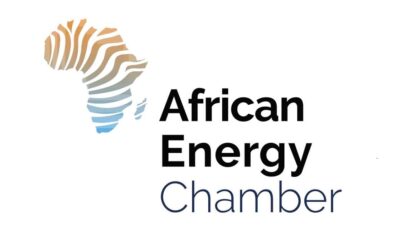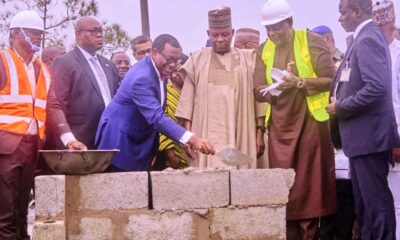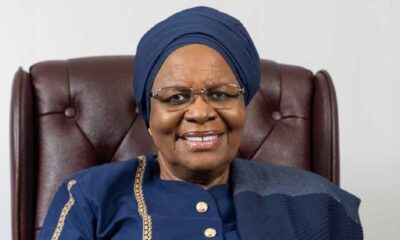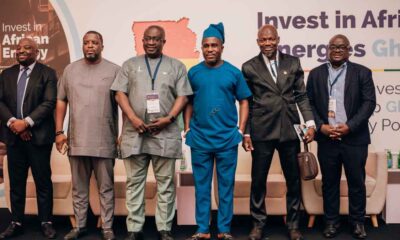Speaking during a webinar on Guyana-Namibia upstream trends, Namibia’s Petroleum Commissioner at the Ministry of Mines and Energy Maggy Shino provided an update on the country’s exploration activities, stating that the country is open for investment as new exploration campaigns kick off
JOHANNESBURG, South Africa, June 28, 2023/APO Group/ —
The African Energy Chamber (AEC) (www.EnergyChamber.org) partnered with global energy and commodities information provider S&P Global Commodity Insights for a webinar on June 27. Exploring the respective upstream markets of Guyana and Namibia, the webinar – moderated by Verner Ayukegba, Senior-Vice President at the AEC and Justin Cochrane, African Upstream Regional Research Director, S&P Global Commodity Insights – provided insight into ongoing exploration efforts across both countries, with presentations investigating how Namibia – as a relatively new upstream play – can learn from Guyana’s experiences.
Namibia has quickly risen to become a highly attractive E&P market, with three major discoveries made in 2022 and 2023 incentivizing a strong slate of regional and global players to the country’s offshore basins. Eager to maintain this exploratory momentum, Maggy Shino, Petroleum Commissioner at Namibia’s Ministry of Mines and Energy, stated that for now, the government has no plans in place to change the current licensing structure in the country, but rather, it is committed to ensuring that the upstream market is “open for investment. We don’t want to force companies to make a decision in a licensing round but want to remain open for investment so that companies come when they are ready.”
According to Shino, “We have an ongoing drilling campaign with three rigs currently busy drilling appraisal and exploration wells. We are expecting two more wells to be drilled before the end of 2023 in the deep waters.” She added that the southern African country is seeing a rise in seismic surveys, and by the end of the year, the government is planning to announcement a series of drilling projects that will take place during 2024.
To date, the Orange Basin represents the only de-risked acreage in Namibia, however, ongoing seismic campaigns in the Namibe and Walvis Basins are likely to reveal sizeable finds, particularly following successful exploration campaigns in the Angolan side of the offshore acreage.
Notwithstanding E&P incentives, Shino explained that the country is seeing heightened interest by global players, owing largely to Namibia’s attractive fiscal and regulatory environment. She stated that, “as a country, there is a benefit of being a late comer because we have gained insights from other countries on how to maximize our [legislation].”
We have an ongoing drilling campaign with three rigs currently busy drilling appraisal and exploration wells
While other countries continue to face challenges associated with environmental concerns, Namibia’s position as a new market has enabled the country to include environmental provisions in the drafting of its legislation. This has not only enhanced its attractiveness as an investment destination but ensures the protection of the environment – a top priority for the southern African country. According to Shino, “the Environmental Management Act has taken into consideration many scenarios to ensure industry growth as well as environmental sustainability. We continue working with civil society to ensure that our laws improve and will continue to provide the much-needed protection of the environment.”
Meanwhile, as a nascent energy market, Namibia has the opportunity to learn from those that went before it. Historically, resource-rich countries have all witnessed an ‘oil boom,’ a trend in which only the communities directly connected to energy developments reap the rewards. However, Namibia is committed to turning this trend around, implementing a number of local content mechanisms to enhance value addition and economic prosperity. According to Shino, the country is turning to its neighbors including Angola, Nigeria, Equatorial Guinea and others to strengthen local content ahead of first oil and gas. The government is also prioritizing economic diversification to ensure the development of various segments of the economy, with tourism having been identified as a top industry.
Shino also provided insight into the country’s potential Organization of Petroleum Exporting Countries (OPEC) membership, stating that “we see great value that an organization like OPEC has in managing the dynamics of the market to ensure that the industry strives. We would like to join at the right time.”
While the offshore basins of Guyana and Namibia show few geological similarities, the timelines by which exploration efforts were undertaken and major discoveries were made are remarkably similar. Both countries witnessed over 50 years of exploratory efforts which yielded few results. However, following initial major discoveries, the pace at which developments, as well as associated E&P campaigns, kicked off rapidly accelerated.
According to Joaquim de Azevedo, Principal Petroleum Economist for Upstream Solutions at S&P Global, the contribution towards GDP growth by the oil and gas sector will trigger an increase in wealth and improvement regarding the well-being of the population of both countries. He said both countries have fiscal terms which are attractive to global investors and are both prioritizing the rollout of gas-to-shore facilities to meet local demand using domestic resources.
Erik Meyer, Senior Technical Research Analyst at S&P Global, added that Guyana and Namibia both rank among the world’s top 25 basins by identified reserves, with Guyana leading at 18 billion barrels of discovered hydrocarbons while Namibia ranks high with its Venus and Graff-1 discoveries. Meyer emphasized that the discoveries made in the southern African country has “unlocked Namibia’s deepwater potential, with a number of prospects not yet explored in the Orange Basin. There is a lot of potential in the basin and we could see future large-scale discoveries.”
For Guyana, the country made 30 discoveries offshore, finds which have enabled further exploration as revenue increases. Similarly, with its three discoveries made to date, Namibia, according to Cody Schulte, Senior Technical Research Analyst, Upstream at S&P Global, is well positioned to attract a new wave of funding. He said that both countries are similar in the fact that testing and drilling across ultra-deep waters have been key for players present in Namibia and Guyana.
Distributed by APO Group on behalf of African Energy Chamber.


 Business3 days ago
Business3 days ago
 Business3 days ago
Business3 days ago
 Business3 days ago
Business3 days ago
 Business3 days ago
Business3 days ago
 Business2 days ago
Business2 days ago
 Business2 days ago
Business2 days ago
 Business2 days ago
Business2 days ago
 Business3 days ago
Business3 days ago










